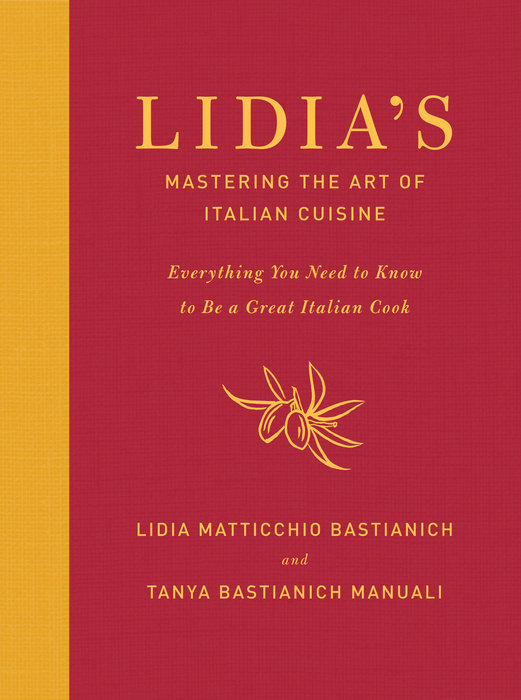Makes about 3 quarts, enough to dress 6 pounds cooked pasta
Ingredients
- 2 pounds ground beef
- 2 pounds ground pork
- 2 cups dry white wine
- 6 ounces bacon or pancetta
- 1/3 cup garlic cloves (about 6 fat cloves)
- 2 tablespoons extra-virgin olive oil
- 2 medium onions, minced in a food processor or finely chopped
- 2 large celery stalks, minced in a food processor or finely chopped
- 1 carrot, peeled and shredded
- 1/2 teaspoon kosher salt, plus more to taste
- 8 cups very hot milk
- 2 cups or more hot Chicken Broth or Vegetable Stock (Vegetable Stock Recipe)
- 6 tablespoons tomato paste
- Nutmeg for grating (to make 1/2 teaspoon, or more to taste)
- Freshly ground black pepper
Directions
Put all 4 pounds of ground meat in a large mixing bowl. With your fingers, crumble and loosen it all up; then toss and crumble the beef and pork together. Pour the white wine over it, and work all the meat through your fingers again so it’s evenly moistened.
To make the pestata: Cut the bacon or pancetta into 1-inch pieces, and put them in the bowl of a food processor with the peeled garlic. Process them into a fine paste.
Pour the olive oil into a large Dutch oven, and scrape in all of the pestata. Set the pan over medium-high heat, break up the pestata, and stir it around the pan bottom to start rendering the fat. Cook until the fat is rendered, about 3 to 4 minutes.
Stir the minced onions into the fat, and cook for a couple of minutes, until sizzling and starting to sweat. Stir in the celery and carrot, and cook until the vegetables are wilted and golden, stirring frequently and thoroughly, over medium-high heat, about 5 minutes or more.
Turn the heat up a notch, push the vegetables off to the side, and plop all the meat into the pan; sprinkle the salt on. Give the meat on the pan bottom a few moments to brown, then stir, spread, and toss with a sturdy spoon, mixing the meat into the vegetables and making sure every bit of meat browns and begins releasing fat and juices. Soon the meat liquid will almost cover the meat itself. Cook at high heat, stirring often, until all that liquid has disappeared, even in the bottom of the pan, about 30 to 45 minutes, depending on the heat and the width of the pan. Stir occasionally, and as the liquid level diminishes, lower the heat so the meat doesn’t burn.
Warm the milk and broth together in a medium saucepan.
When all the meat liquid has been cooked off, drop tomato paste into a clear space on the pan bottom. Toast it for a minute in the hot spot, then stir to blend it with the meat and cook for another 2 to 3 minutes.
Pour in 2 cups of the hot milk and broth, and stir into the meat; add more milk and broth if needed to bring the level just over the top of the meat. Add the grated nutmeg. Bring the sauce liquid to an active simmer, cover the pan, and adjust the heat to maintain slow, steady cooking, with small bubbles perking all over the surface of the sauce.
From this point, the Bolognese should cook for 3 more hours. Check the pot every 20 minutes, and add hot milk and broth as needed to cover the meat. The liquid level should be reducing by 1 1/2 to 2 cups between additions, so you’ll need to have warm water ready to replenish the sauce after all the milk and broth have been added. Adjust the heat if the sauce is reducing faster than that or not as fast. Stir often to make sure the bottom doesn’t burn.
During the final interval of cooking, you want to reduce the level of the liquid- once milk and broth, but now a highly developed sauce. At the end, the meat should no longer be covered but appear suspended in a thick, flowing medium. If the meat is still submerged in a lot of liquid, remove the cover completely to cook off moisture quickly. A few minutes before the end of cooking, taste a bit of meat and sauce, and add salt if you want. Grind 1 teaspoon of black pepper right into the sauce, stir it in, and cook about 5 minutes before removing the pan from the heat. If you’ll be using the sauce right away, spoon off the fat from the surface, or stir it in, as is done traditionally. Otherwise, let the sauce cool, then chill it thoroughly and lift off the solidified fat. Store the sauce for several days in the refrigerator, or freeze it (in measured amounts for different dishes) for use within a few months.

